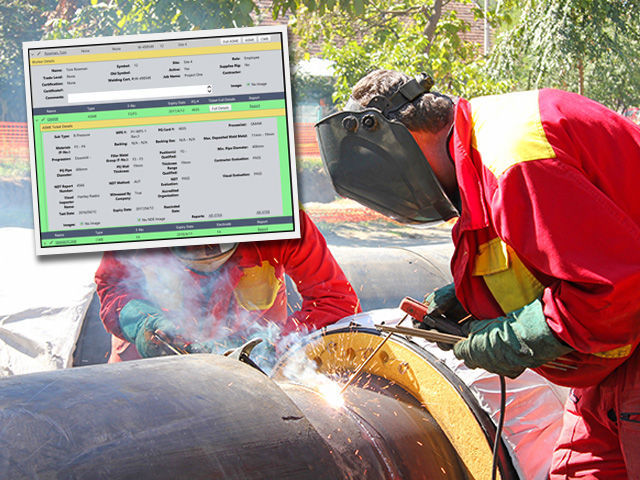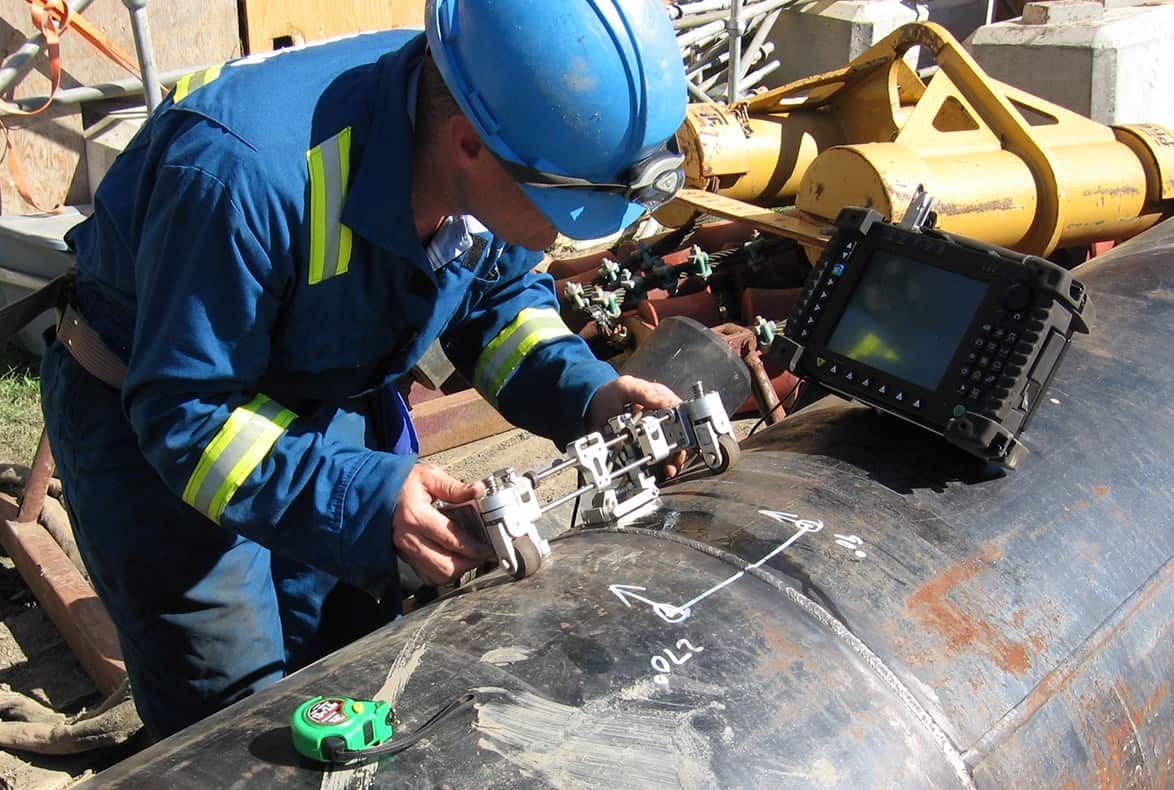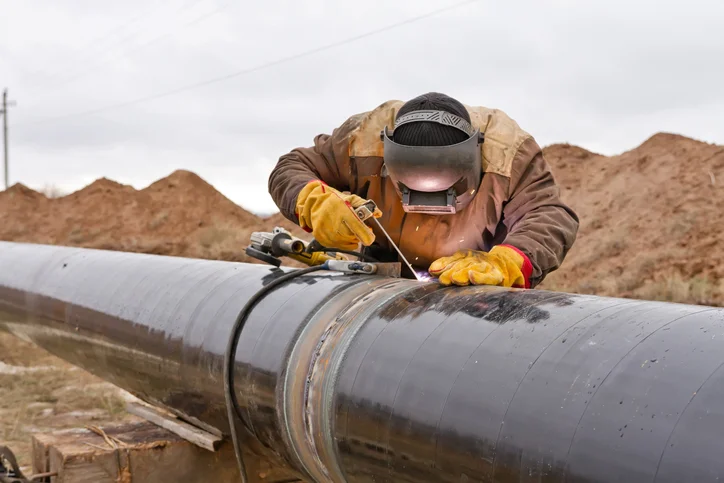Pipeline Welding Inspection: Cutting-Edge Approaches for Accurate Assessments
Advanced Techniques in Pipeline Welding Examination: Developments and Technologies for Enhanced Accuracy and Integrity in Weld Analysis
The landscape of pipe welding examination is undertaking a significant improvement, driven by advanced strategies that promise to boost both precision and reliability in weld analyses. Advancements such as automated examination systems and progressed imaging modern technologies are redefining conventional techniques, while non-destructive testing methods make certain material integrity is preserved. As these innovations progress, they not just raise problem detection rates but also enable extra effective maintenance strategies. However, the implications of these developments expand past prompt advantages, elevating essential concerns about future practices and requirements in the industry.

Importance of Weld Assessment
Making sure the integrity of pipeline welds is critical to the overall safety and security and integrity of industrial systems. Welds offer as the architectural backbone of pipes, which transfer a selection of liquids under differing stress. Issues in welding can lead to devastating failures, causing not only substantial financial losses yet additionally prospective ecological catastrophes and dangers to public safety and security. Consequently, strenuous inspection of welds is integral to the lifecycle of pipe framework.
The relevance of weld examination expands beyond plain conformity with governing requirements. It works as a positive measure to identify and fix flaws, such as incomplete blend, porosity, or splits, before they rise right into major issues. Effective assessment techniques likewise contribute to the long life of pipelines, lowering upkeep prices and improving operational performance.
Moreover, thorough weld inspections foster trust fund among stakeholders, including governing bodies, investors, and the areas served by these pipes. By making sure that all welds meet the called for requirements, organizations can minimize risks and promote their track records. In recap, weld evaluation is crucial not only for functional honesty however additionally for the wider effects it holds for security and ecological stewardship.
Automated Assessment Solutions
The assimilation of automated evaluation systems in pipeline welding has reinvented the approach to ensuring weld high quality and stability. These systems employ innovative robotics and expert system to carry out examinations that are not just quicker yet also much more constant than typical approaches. Automated systems can cover extensive sizes of pipes effectively, recording data that human assessors may neglect because of exhaustion or environmental conditions.
Among the vital benefits of automated examination systems is their ability to operate in harmful settings, reducing the danger to human inspectors. They make use of numerous non-destructive screening (NDT) techniques, such as ultrasonic screening and magnetic fragment inspection, to examine weld honesty without jeopardizing the structure. The data accumulated is processed in real-time, permitting immediate feedback and timely restorative actions when flaws are determined.
Moreover, automated systems promote the standardization of examination procedures, guaranteeing that each weld is evaluated versus regular standards. This not just improves the reliability of outcomes however likewise streamlines conformity with regulative standards. As markets continue to focus on safety and security and operational effectiveness, the function of automated examination systems in pipeline welding will unquestionably broaden, leading the method for more advanced quality control methodologies.
Advanced Imaging Technologies
Regularly employed in modern-day pipeline welding evaluations, progressed imaging modern technologies have actually considerably improved the capacity to identify and examine weld flaws. Techniques such as electronic radiography, calculated tomography, and thermographic imaging offer examiners with high-resolution images that expose sub-surface problems and architectural disparities that might be undetectable to the naked eye.
This leads to quicker inspections and improved accuracy in identifying essential issues. Computed tomography, on the various other hand, supplies three-dimensional imaging, making it possible for assessors to envision intricate geometries and assess the integrity of welds from several angles.
Thermographic great site imaging utilizes infrared innovation to discover variants in temperature level, determining areas of prospective weakness or tension within the weld. These sophisticated imaging innovations not only improve defect detection prices yet additionally lower the time and sources needed for pipe examinations. Therefore, they play a critical function in maintaining pipe safety and integrity, making certain compliance with sector standards while minimizing functional threats.
Non-Destructive Evaluating Techniques
Using numerous strategies, non-destructive testing (NDT) approaches are crucial in pipe welding examinations, permitting for the evaluation of weld integrity without compromising the product's architectural honesty. NDT includes a series of approaches, consisting of ultrasonic screening (UT), radiographic screening (RT), magnetic bit screening (MT), and dye penetrant testing (PT) Each method has unique advantages and applications relying on the specific demands of the inspection.
Ultrasonic screening makes use of high-frequency acoustic waves to spot inner defects, giving specific dimensions of weld thickness and stability. Pipeline Welding Inspection. Radiographic screening employs X-rays or gamma rays to generate pictures of the weld, revealing interior flaws that may not show up externally. Magnetic fragment screening works for detecting surface area and near-surface suspensions in ferromagnetic products, while color penetrant screening highlights surface fractures by utilizing a colored dye
Including these NDT methods into pipeline welding examinations enhances the precision and reliability of weld assessments, making certain that potential failures are determined early. As markets require higher criteria for safety and efficiency, the function of NDT in maintaining the stability of welded frameworks remains to be pivotal in pipeline building and construction and upkeep.

Future Trends in Weld Assessment
As we aim to the future of weld evaluation, advancements in technology are positioned to transform the methods employed for evaluating pipe stability. The assimilation of man-made knowledge (AI) and maker knowing in inspection processes is anticipated to improve the precision of problem discovery and anticipating upkeep. These technologies permit real-time data analysis, enabling examiners to determine possible problems prior to they intensify right into significant problems.
Furthermore, making use of drones furnished with innovative imaging systems is obtaining grip. These airborne assessments can cover vast locations quickly, capturing high-resolution photos and information that can be analyzed for issues in hard-to-reach locations. This not just improves safety yet also enhances performance in the inspection process.
Additionally, the development of wise sensors embedded in pipe systems offers the capacity for constant monitoring. These sensing units can detect changes in pressure, temperature, and vibrations, supplying useful insights into the wellness of the welds over time.

Final Thought
To conclude, the assimilation of innovative strategies in pipe welding examination significantly improves the accuracy and reliability of weld assessments. Technologies such as automatic assessment systems, advanced imaging technologies, browse around this site and non-destructive screening methods play a see it here vital function in improving issue discovery prices and promoting proactive upkeep methods. As these modern technologies remain to progress, they will further guarantee the security and efficiency of pipe systems, ultimately adding to the integrity of critical facilities.
